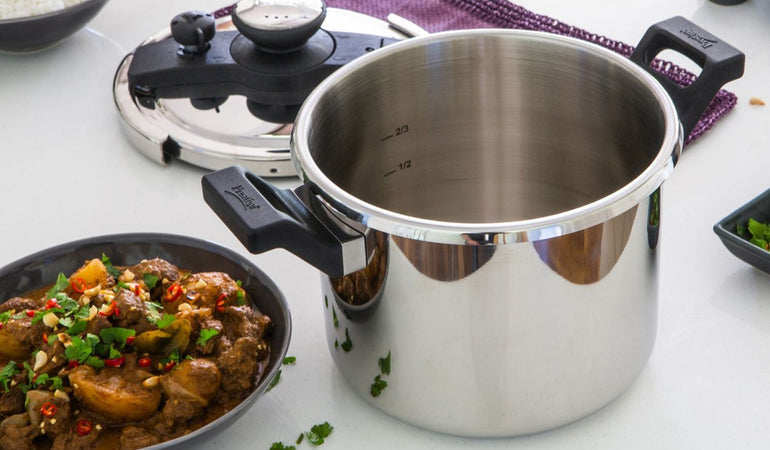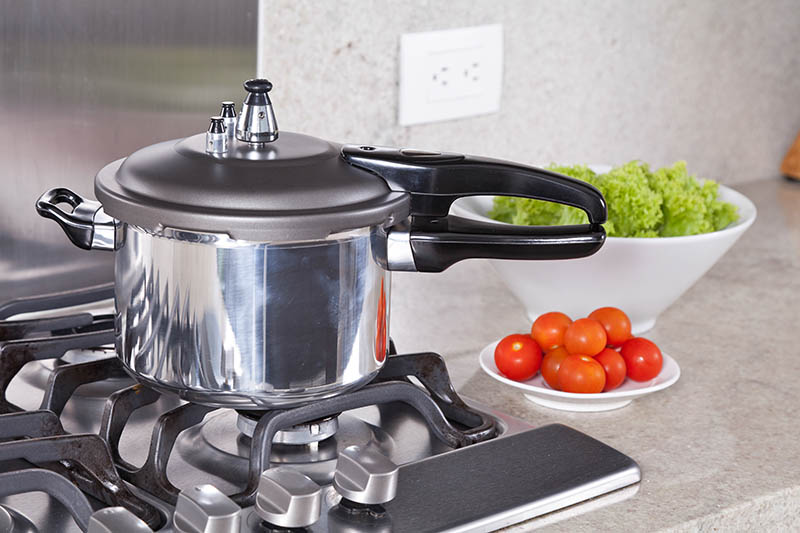Mastering the Art of Cooking Tripe in a Pressure Cooker: A Step-by-Step Guide
Written By James Morgan
Tripe, an often underappreciated ingredient, can be transformed into a culinary delight with the right techniques. Today, we're diving into the details of how to cook tripe in a pressure cooker, a method that ensures tenderness and flavor in a fraction of the usual cooking time. This guide is designed to help both novices and seasoned cooks to elevate their tripe-cooking skills, using a pressure cooker to achieve perfect results.

Why Cook Tripe in a Pressure Cooker?
Cooking tripe can be a daunting task due to its tough texture and unique flavor, requiring long simmering times when using traditional methods. The magic of cooking tripe in a pressure cooker lies in its ability to break down the tough fibers quickly, significantly reducing cooking time while intensifying the flavors. This efficient method not only saves time but also helps retain more nutrients, making your dish more wholesome and delicious. For further insights, you might want to explore cooking with a pressure cooker.

What is Tripe?
Tripe is the edible stomach lining of ruminant animals such as cows, sheep, and goats. Known for its distinct texture and its ability to absorb flavors, tripe is a versatile ingredient found in international cuisines from Mexican menudo to French andouille. Well-cleaned and prepared tripe can be exceptionally tender and is prized for its ability to complement robust seasonings and aromatic herbs.

Preparing Tripe for Cooking
Before we delve into how to cook tripe in a pressure cooker, its essential to prepare it properly. Most tripe available in supermarkets is pre-cleaned, but an extra rinse can ensure the best result. Here's a step-by-step guide:
- 2 pounds of tripe
- Juice of 2 lemons or 1/2 cup of vinegar
- Water
Instructions:
1. Place the tripe on a cutting board and, using a sharp knife, trim any visible fat and rinse under cold water.
2. Soak the cleaned tripe in a solution of lemon juice or vinegar and water for about an hour to help neutralize any remaining odor and to further tenderize it.
3. Rinse the tripe thoroughly under cold running water, ensuring it's clean and ready for cooking. This step also helps to soften the tripe texture.

How to Cook Tripe in a Pressure Cooker
Ready to transform your cleaned tripe into a delectable dish? Follow these comprehensive steps for the best results.
- 2 pounds of cleaned tripe
- 1 large onion, chopped
- 3 cloves of garlic, minced
- 2 carrots, diced
- 2 celery stalks, sliced
- 1 bay leaf
- 1 teaspoon black peppercorns
- 6 cups beef or chicken broth
- Salt to taste
- Fresh parsley, chopped (optional for garnish)
Instructions:
1. Set up your pressure cooker and select the saut function. Add a splash of oil to the pot.
2. Saut the onions, garlic, carrots, and celery until they begin to soften, about 5-7 minutes.
3. Add the cleaned tripe, bay leaf, black peppercorns, and broth to the pot. Stir to ensure all the ingredients are well mixed.
4. Secure the lid of the pressure cooker and set it to high pressure. Cook the tripe for 25-30 minutes depending on the thickness and desired tenderness.
5. Once the cooking time is up, allow the pressure to release naturally for about 10 minutes, then use the quick release to vent any remaining pressure.
6. Carefully remove the lid, taste, and adjust the seasoning with salt if necessary. Garnish with fresh parsley before serving.
Congratulations! You've learned how to cook tripe in a pressure cooker to perfection. This method is not only efficient but also allows the tripe to absorb the broth flavors deeply, resulting in a rich and robust dish.
Popular Tripe Dishes to Try
Inspired by your newfound techniques? Here are a few popular tripe dishes from around the world that you can try next:
1. Menudo (Mexico)
A traditional Mexican soup, menudo is made with tripe and hominy in a spicy broth, often served with lime, chopped onions, and cilantro. It's considered a great remedy for hangovers and a comforting dish during cold seasons. For more comfort food ideas, check out Spare Ribs on our site.
2. Andouille (France)
Andouille is a French smoked sausage made mainly from the intestines and stomach of a pig. It's known for its strong, distinctive flavor and is delicious when grilled or sauted. If you love grilling, you might enjoy making Wagyu Burgers.
3. Trippa alla Romana (Italy)
This Roman-style tripe dish is slowly cooked in a savory tomato sauce, flavored with garlic, onions, and mint, and usually topped with grated pecorino cheese. Its a hearty and satisfying dish that's perfect for a comforting meal. For more hearty meals, explore our guide on Broccoli and Rice Casserole.
Tips for Perfect Tripe Every Time
Cooking tripe to perfection can be an art, but with these tips, you'll consistently achieve great results:
1. **Freshness** is Key: Always choose fresh, high-quality tripe. If possible, opt for pre-cleaned tripe from a reputable butcher or market.
2. Don't Rush the Cleaning: Even if your tripe is pre-cleaned, an additional rinse and a soak in an acidulated water solution (lemon juice or vinegar) will improve the final product.
3. Season Generously: Tripe can absorb flavors wonderfully, so dont be shy with your seasoning. Experiment with different herbs, spices, and broths to find your favorite combinations.
4. Mind the Cooking Time: While the pressure cooker significantly reduces cooking time, keep an eye (and taste test) to avoid overcooking, which can lead to mushy tripe.
Cleaning Up
After cooking a delightful tripe dish, ensuring your kitchenware is clean and well-maintained is crucial. Here are some recommended cleaning products:
As an Amazon Associate, I earn from qualifying purchases.
Conclusion
Now that you know how to cook tripe in a pressure cooker, you can confidently experiment with various recipes and enjoy the unique flavors and textures that tripe offers. Remember, the key to a great tripe dish is in the preparation, seasoning, and cooking time — all of which are enhanced by using a pressure cooker. Happy cooking, and may your culinary adventures with tripe be both rewarding and delicious!
As an Amazon Associate, I earn from qualifying purchases.



